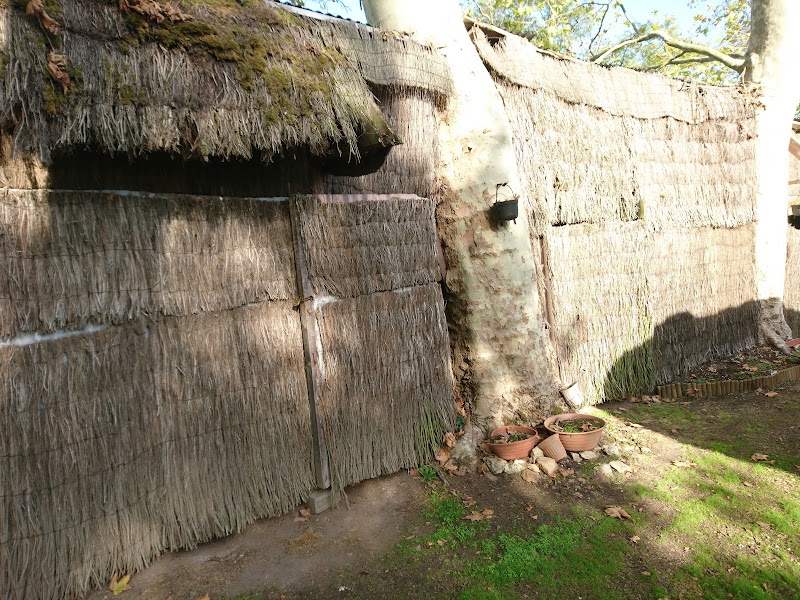Pedaling Through the Loire: Cycling the Vineyards and Wine Tastings of Saumur
Cycle through lush vineyards and stop at historic chateaux to taste Saumur’s celebrated wines. This Loire Valley adventure combines gentle terrain with immersive wine experiences, perfect for riders seeking to blend outdoor activity with local culture.
Pack for Mixed Terrain
Paths vary from paved roads to gravel vineyard tracks. Use hybrid or road bikes with good tires and bring a repair kit.
Hydrate Often
The region's sun and gentle valley winds dry you faster than expected. Carry at least 2 liters of water per rider, especially in summer.
Plan Tastings in Advance
Many chateaux require reservations for tours or tastings, particularly during peak seasons. Call ahead to secure your spot.
Wear Supportive Footwear
Cycling shoes should provide good grip and comfort for walking around vineyards and chateaux interiors.
Pedaling Through the Loire: Cycling the Vineyards and Wine Tastings of Saumur
Cycling through the Loire Valley vineyards around Saumur offers a hands-on way to engage with both the landscape and local wine culture. The route stretches about 25 kilometers on mostly gentle terrain, weaving through rows of grapevines that ripple like green waves under the sharp sun. The path challenges with slight elevation gains around 150 meters, enough to keep you alert but not worn down.
Starting from Saumur, your wheels will meet a network of quiet country lanes and gravel paths that thread vineyards with châteaux, each inviting a pause. These local estates don’t just showcase architecture; they open barrels and pour glasses of Saumur’s world-class whites and sparkling rosés, each sip offering a taste of terroir — the earth’s character distilled. The vineyards dare you to explore further, their soils hinting at the mineral sharpness in the wines.
Plan for a full day to cycle and taste. Morning rides reward you with cool air pushed forward by the soft Loire winds. Midday stops call for shaded breaks and plenty of water. Hydration is non-negotiable; the sun can press hard, and the valleys amplify heat. Good cycling shoes are a must—not just comfy but grippy enough for gravel stretches.
The chateaux visits are more than scenic breaks. They connect you to centuries of craftsmanship and tradition. Many offer guided tastings explaining how the unique climate shapes the vines, and how seasonal changes alter the wine’s profile. Alongside, local markets near Saumur provide fresh snacks that pair perfectly with your newfound favorites.
This adventure isn’t just about the ride or the wine. It’s about meeting a landscape that remains fiercely itself — vineyards soaking up sun, riverbanks brushing away overgrown trails, and stone walls that hold stories in their cracks. Respect the pace nature sets; let the vineyards and chateaux define your rhythm rather than racing through.
To prepare, pack light: sunscreen, spare tubes, and a reliable map or GPS with vineyard routes marked. Avoid the peak summer months if you want to dodge the busiest tasting rooms and hottest stretches. Spring and early fall bring vibrant colors, cooler air, and richer vineyard conversations.
Cycling here is a blend of epicurean delight and physical engagement, inviting you to savor both the landscape and its bounty. The Loire Valley’s vineyards around Saumur remain accessible, beautiful, and raw — a perfect cycle to immerse, explore, and taste a piece of French viticultural heritage.
Nearby Trips
All Adventures
Boat Charters
Water Activities
Adventures near Saumur
Discover the unique and memorable adventures that make Saumur special.
Frequently Asked Questions
How long is the typical cycling route through the vineyards near Saumur?
The main cycling loop around Saumur vineyards covers roughly 25 kilometers with a mix of paved roads and gravel trails, typically taking 4 to 6 hours including wine tasting stops.
Do I need to book wine tastings at the chateaux in advance?
Yes, many chateaux require reservations, especially during peak tourist seasons. Booking in advance ensures availability and often provides access to guided tours.
Is the route suitable for beginner cyclists?
The terrain is mostly gentle with some slight elevations, making it accessible for casual cyclists with basic bike handling skills. However, some comfort on gravel sections is recommended.
What is the best time of day to start the ride?
Early morning is ideal, especially in summer, to avoid midday heat and enjoy a cooler ride with tranquil vineyard views before tasting rooms become busy.
Are there places to eat along the route?
Yes, Saumur town and nearby villages offer local markets, boulangeries, and cafés where you can pick up fresh snacks or meals to complement your wine experience.
Can I do this cycling and tasting adventure year-round?
While the route is accessible year-round, spring through fall is best for weather and vineyard activity. Winter offers quiet paths but limited tasting options as some chateaux close.
Recommended Gear
Hybrid or Gravel Bike
A bike suited for paved and unpaved vineyard paths reduces fatigue and helps maintain control.
Hydration Pack or Bottles
Keeping water accessible is critical, especially under the summer sun and long rides.
Cycling Gloves
Protect your hands on rough roads and improve grip during longer rides.
Light Rain Jacket
Spring showers can appear without warning; a packable rain jacket prepares you for wet conditions.
Local Insights
Hidden Gems
- "An elevated viewpoint near Château de Montreuil-Bellay offers sweeping views over the vineyards and the Loire River beyond."
- "Small family-run vineyards off the main circuit where you can sometimes taste rare, limited batches by appointment."
Wildlife
- "Keep an eye out for buzzards circling overhead and kingfishers darting along the Loire’s edges."
- "Butterflies, including painted ladies, hover through the vineyard rows in spring and summer."
History
"Saumur has a rich winemaking history stretching back to medieval times, with chateaux often serving dual roles as defensive fortresses and wine producers, reflecting the intertwined nature of culture and landscape."

